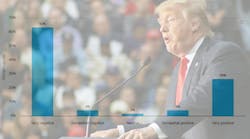EPA Announces Funding for Nutrient Pollution Reduction
The U.S. Environmental Protection Agency Assistant Administrator for Water Radhika Fox, joined by Iowa Secretary of Agriculture Mike Naig, announced $60 million over the next five years to fund nutrient reduction efforts through the Gulf Hypoxia Program. Hypoxia means low oxygen levels in water and can be caused by excess nutrients such as nitrogen and phosphorus. Hypoxia can impact ecosystems, killing fish and other wildlife, creating aquatic dead zones in severe areas.
The announcement is a key component the Bipartisan Infrastructure Law, which provides an investment in the nation’s waters. This funding will deepen the Agency’s collaboration with states and agricultural partners by supporting actions of the 12 member states of the Mississippi River/Gulf of Mexico Watershed Nutrient Task Force (Hypoxia Task Force) to reduce nutrient pollution.
“The Mississippi River and Gulf of Mexico watershed is an iconic ecosystem that millions of Americans depend on for drinking water, agriculture, recreation and economic development and it is essential that we reduce nutrient pollution that harms water quality,” said EPA Assistant Administrator for Water Radhika Fox. “This funding for the Bipartisan Infrastructure Law is another way that the Biden-Harris Administration is investing in rural communities, while supporting the leadership of states.”
With $60 million over the next five years, the Hypoxia Task Force will accelerate its work on the Gulf Hypoxia Action Plan. The funding will significantly expand and enhance capacity of the states to improve water quality in the Gulf and throughout the Mississippi/Atchafalaya River Basin. To support the work of the Task Force, EPA will also deepen its existing collaborations with the agricultural community, seek new partnerships and identify and elevate examples of producer innovation.
“Through the Hypoxia Task Force, states are working with federal partners to take on the challenge of implementing their Nutrient Reduction Strategies. These state-driven strategies have engaged and expanded partnerships for research, implementation and measurements while also developing and deploying innovative conservation practices,” said Iowa Secretary of Agriculture Mike Naig. “This new funding will help improve water quality and meet the unique needs of each state as outlined in their Nutrient Reduction Strategies.”
The announcement includes a memorandum providing guidance for states under the new Gulf Hypoxia Program. The provides information on how EPA will award and administer the Gulf Hypoxia Program funds, highlights priorities for nutrient reduction, and provides flexibility for state specific activities. EPA expects states will scale up implementation of nutrient reduction strategies with bold, systemic advances to accelerate nutrient load reductions. States will engage local communities in planning nutrient reduction projects to ensure that the water quality benefits of this program are realized by disadvantaged communities, and support use of conservation practices that are resilient and adaptable to changing climate conditions.
This is the latest in a series of announcements emphasizing EPA’s commitment to rural communities, including: $21.7 million in technical assistance grant funding to support safe water in small and rural communities; $12 million for farm-focused projects in the Gulf of Mexico watershed; and $17 million in grant funding to help provide training and technical assistance to small drinking water and wastewater systems that often serve small communities and rural America.


